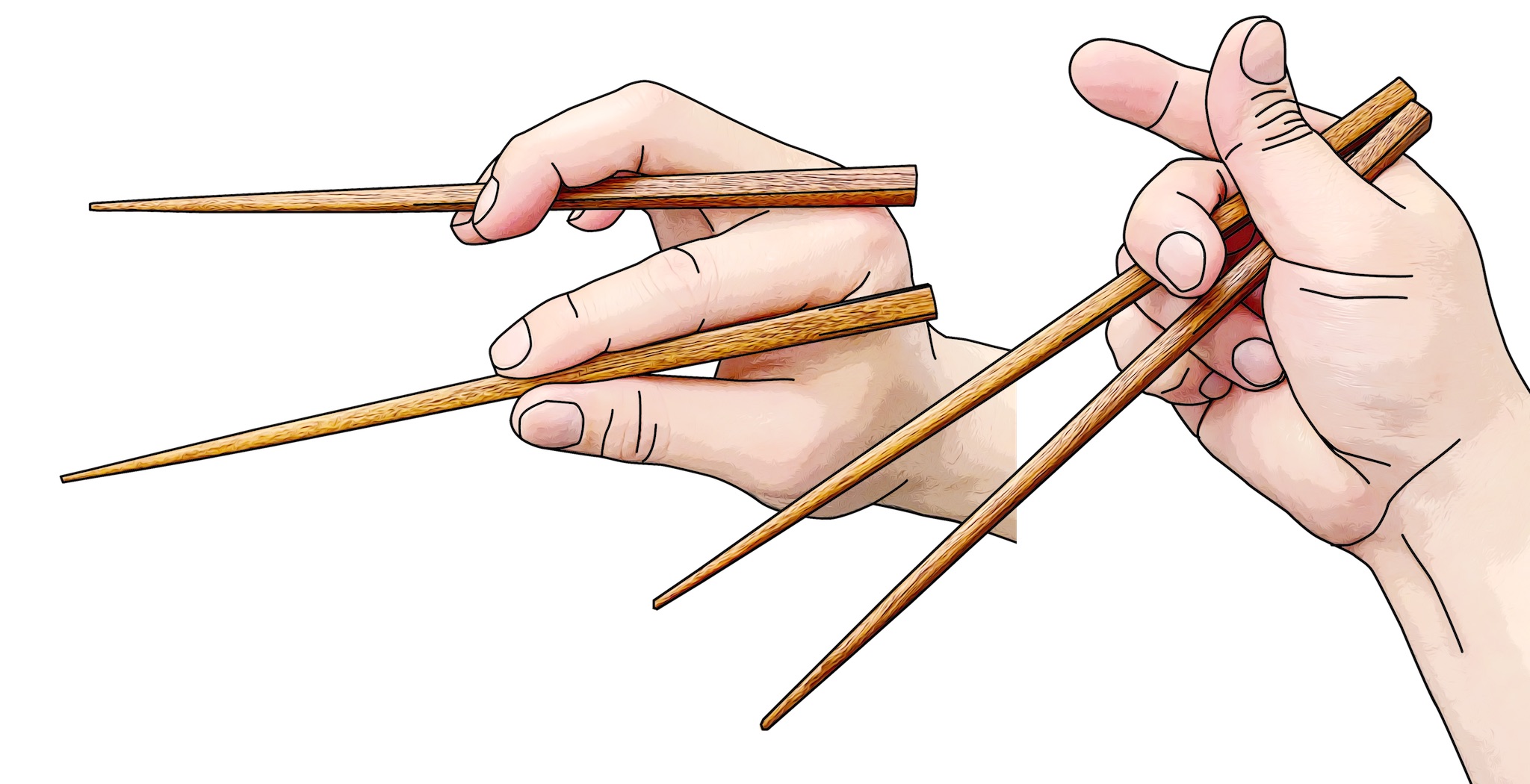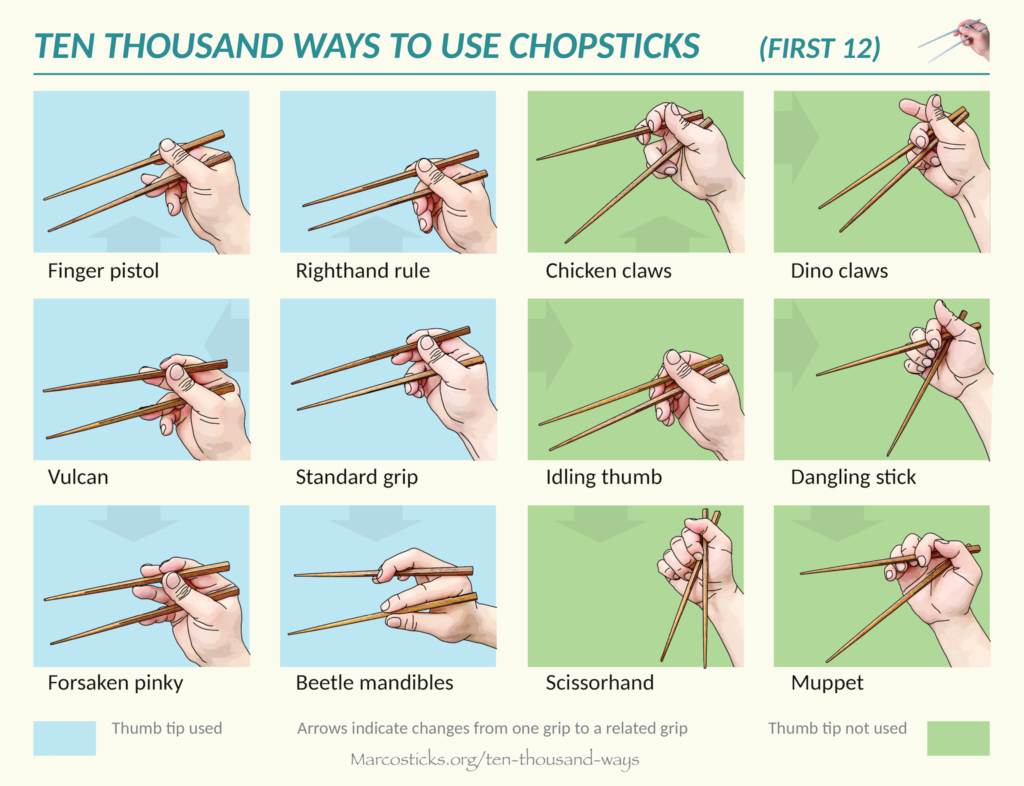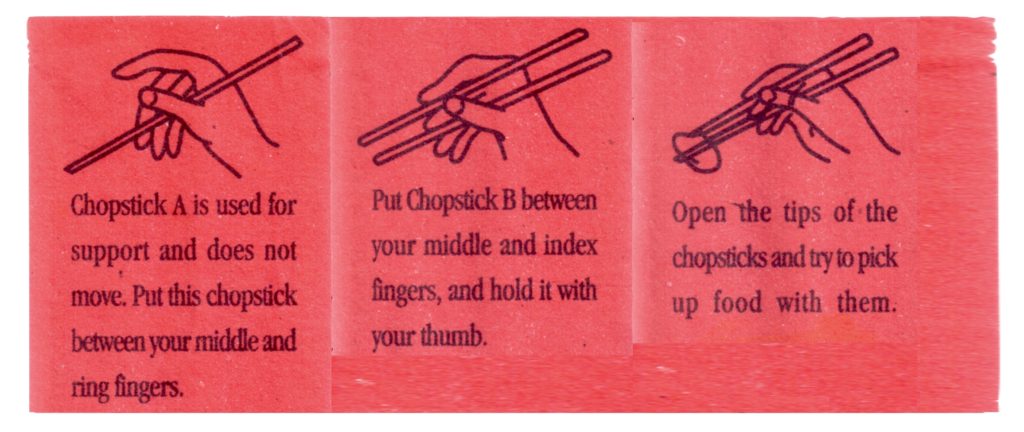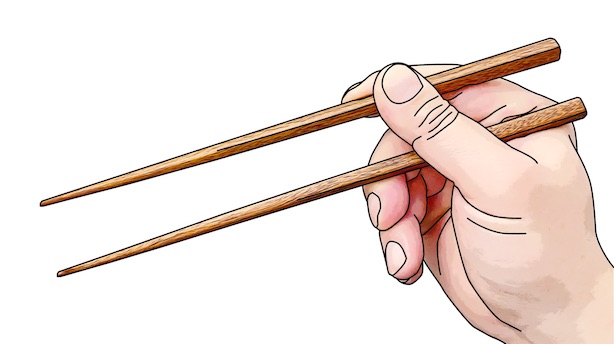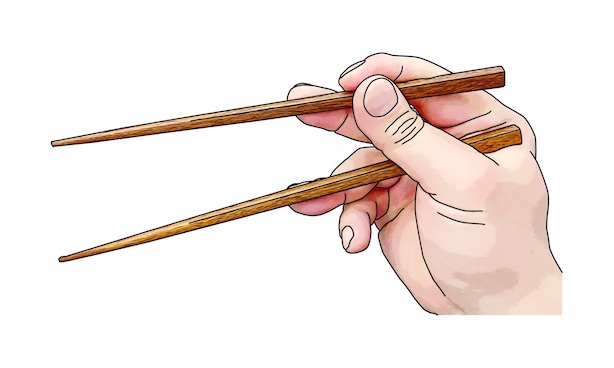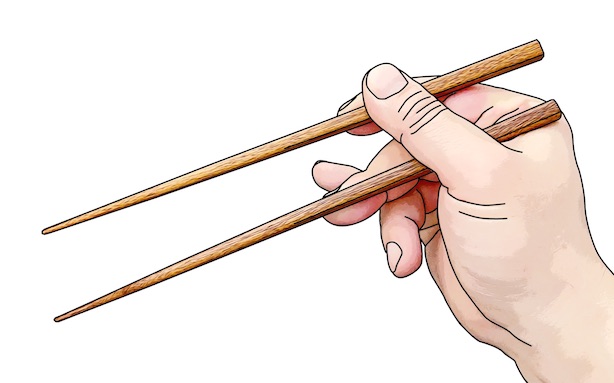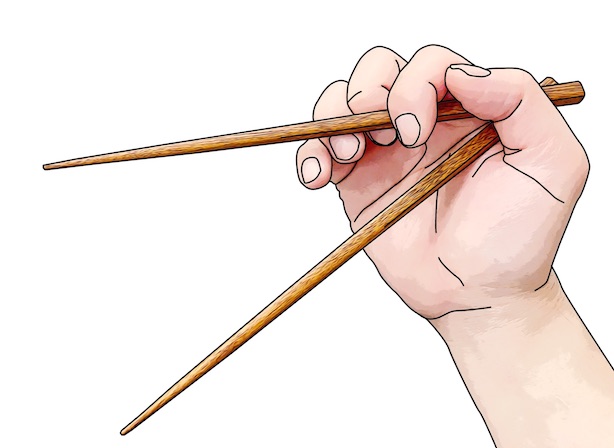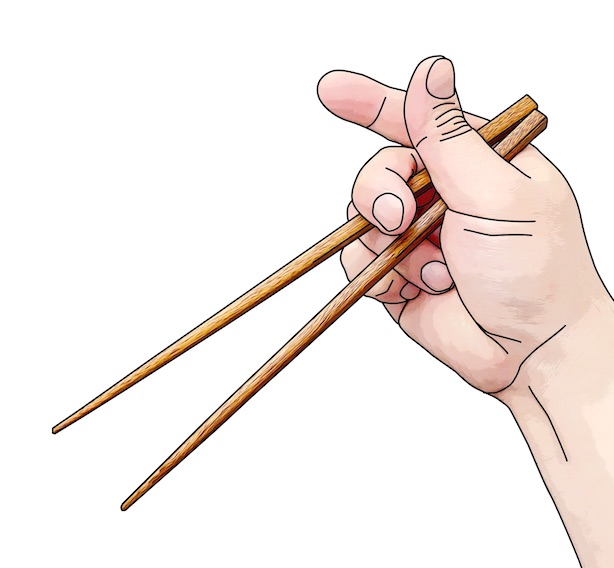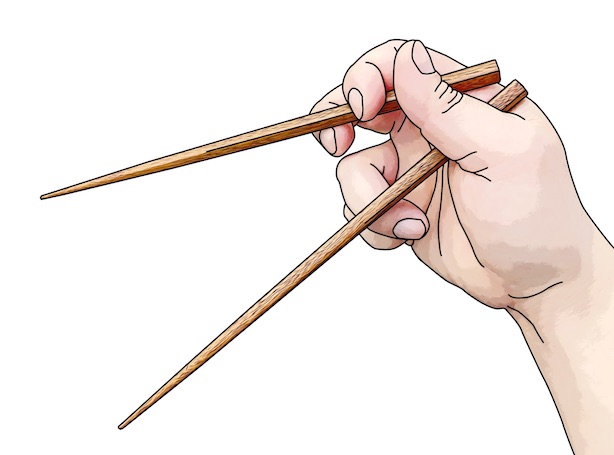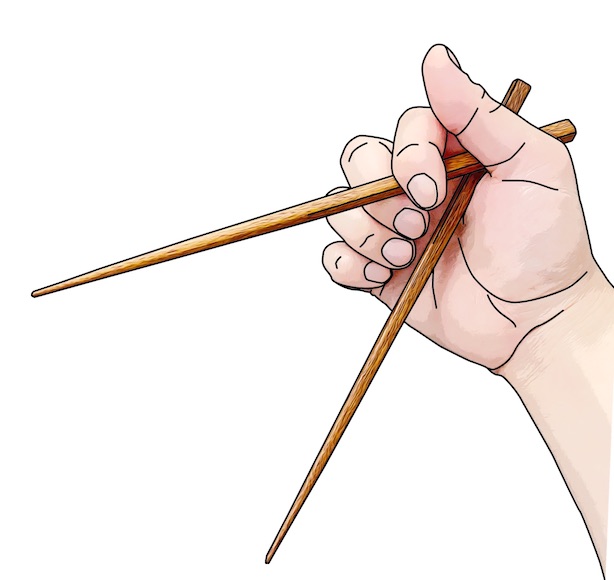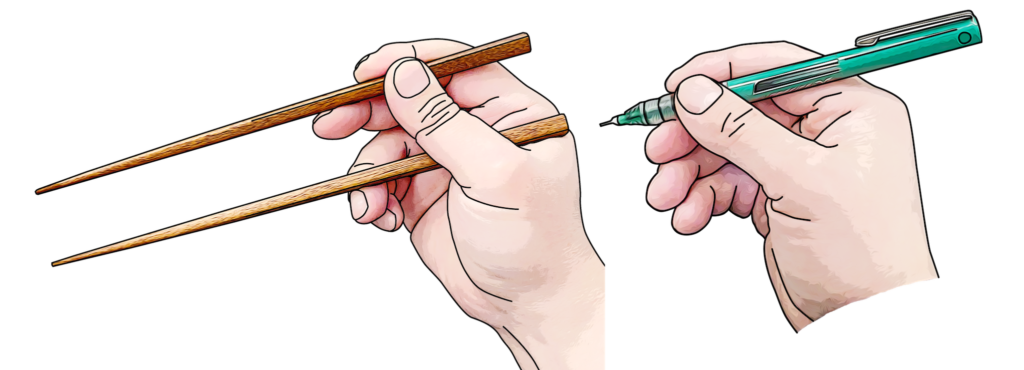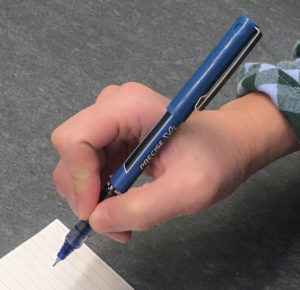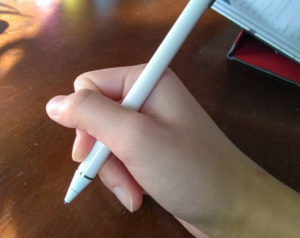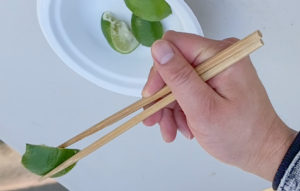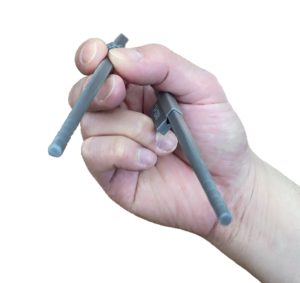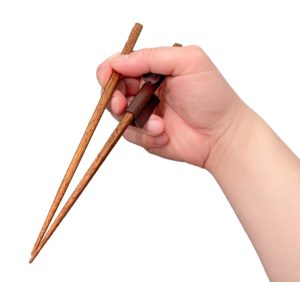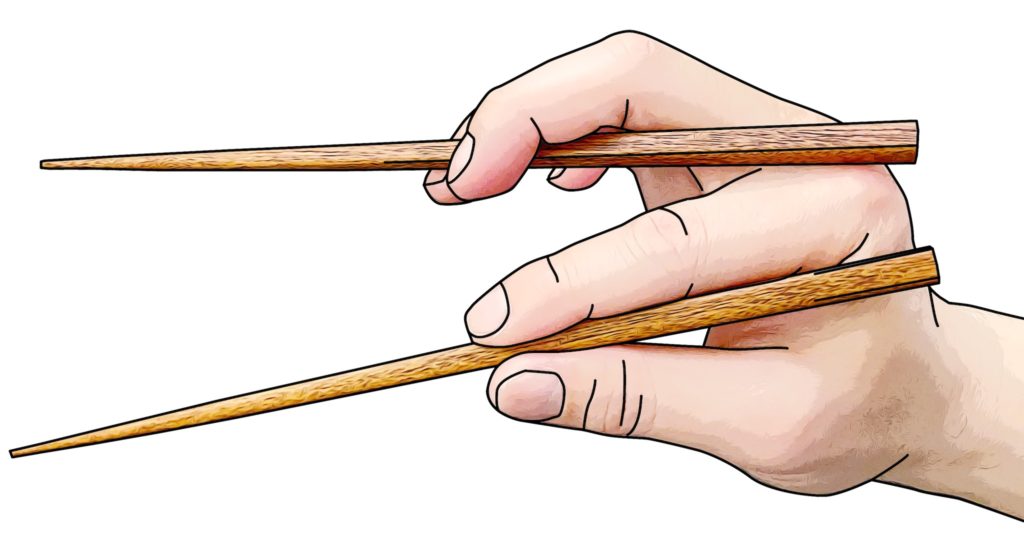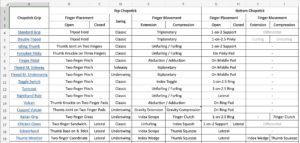Last Updated on 2022 年 02 月 4 日 by 編輯
While drawing the cool guide “ten thousand ways to use chopsticks“, we tried to split 12 selected grips into two groups, to give the poster an interesting look (blue on left vs green on right). After a few attempts at finding a factor to evenly split grips, we stumbled upon one. We look at whether the tip of the thumb was used in moving the top chopstick. This was the result:
We didn’t think much about this choice of comparing grips, at the time. We posted this picture on Reddit, and got 12,000 upvotes in 4 hours. One thousand comments were written in 4 hours on this post by folks. We collected a lot of useful information from these comments.
內容目錄
To use, or not to use the thumb
One theme kept repeating itself in these comment. It appeared that adult learners tended to wield blue grips – that is, grips where the tip of the thumb engaged the top chopstick, and actively moved it.
We got fewer comments from lifelong users. This being an English site, naturally fewer lifelong chopstick users commented on their use of chopsticks. But based on the few data points we had from this Reddit post, and our own empirical records, we believe that a much greater percentage of lifelong users wield green grips – that is, grips where the tip of the thumb remains unused throughout chopstick movements.
This topic deserved more research. But the sheer number of responses calls for this premature reveal. Perhaps a researcher can pick up this topic, and shed light on the phenomenon.
Adult learners use the thumb
We think that many adult learners learn from instructions found on chopstick wrappers. These people will usually use the tip of the thumb, because that is what these instructions show, both in pictures and in words.
That adult learners learn alternative grips from crude wrapper instructions is a hypothesis we discussed in several articles, including Righthand Rule, Vulcan, Finger Pistol, and Turncoat. These are all blue grips in the cool guide, except for the Turncoat grip which didn’t make it into the guide.
Many people on the Reddit post pointed out that some chopstick wrappers did not come with instructions. Apparently in Australia instructions-on-wrappers was not a thing. So perhaps wrappers is only one factor. Maybe there are additional factors to consider.
Early training makes some preschoolers neglect the thumb
We hypothesize that lifelong learners are pushed by parents to learn to wield chopsticks, when they were too young and too small to effectively use Standard Grip. This is especially true in Taiwan and in China where plastic melamine chopsticks are common place. These are longer than most chopsticks. And they are heavy. A preschooler may not be able to wield them effectively with Standard Grip, especially when parents are unable to explain clearly how chopsticks actually work.
We hypothesize that preschoolers, when pressured to eat with chopsticks, will find their own ways to make eating work. One easy way to make two heavy sticks pinch a food item is to clutch both sticks in the middle of the palm, and close four fingers into a fist. We think this is the origin of many green grips. Following are four grips which are much more commonly found in lifelong users, than adult learners.
Clutching fingers into a fist to use chopsticks generally does not require the use of the tip of the thumb. To extend tips open, one simply relax fingers such that the bottom stick drops by gravity alone. To close tips, the palm is used to squeeze two sticks close together. The thumb is not used.
Once this childhood habit becomes perfected, it continues into adulthood unchallenged.
Caswellian thumb and penholds
Some chopstick themes that we discover and investigate turn out to have counterparts in the pen grip research field. This shouldn’t be surprising, considering how the opposable thumb in great apes is the enabler for both chopstick grips and penholds.
This topic is covered at length in Hold Chopsticks like a Pen. Of particular interest to the present topic of “to thumb or not to thumb”, is a related article: Caswellian Thumb and Chopsticks.
It has become increasingly clear to us that the modern world no longer holds (Western) pens the same was as people did only a hundred years ago. We see this as a trend moving away from the flattened thumb pose as used in both old-style pen grips, and in the Standard Grip for chopsticks. The Caswellian thumb article discusses this at length.
This penhold trend appears to be correlated with how a large number of lifelong (relatively young) users hold chopsticks. The largest chopstick grip family we have discovered so far is the Lateral grip family. We have collected at least six key grips that descend from this family root. All of these descendants sport distinct ways of extending chopsticks apart. But they all share one common Compression posture. And this compression posture looks just like the Lateral Tripod penhold discussed above. Thus the family name.
Chopstick cramps and Chopstick Buddies
Our research increasing point to the unnatural Caswellian thumb pose as a major contributor to chopstick cramps. This is an underreported issue in chopsticking.
We have create two chopstick aids to address chopstick cramps. The first one is the our model H Finger Helpers. The second one is the model B Chopstick Buddies.
Beetle Mandibles is surprisingly popular among adult learners
We expected that many English-speaking Redditors would confirm the popularity of Righthand Rule, Vulcan, Finger Pistol, and Turncoat. In fact, they did.
What we did not expect was that a large number of adult learners also came out as users of Beetle Mandibles. What we thought was an exotic grip turned out to be a relatively common grip among adult learners.
Even more surprising were the many reports of people using variants of Beetle Mandibles. In time we’ll be adding these grips into our catalog, based on pictures and videos we received from folks. For now, we have one of them published: The Middle Path Grip.
Retrospective
As we wrote this article, one idea continued to churn in our head. That is, kids and adult learners alike seem to find their own grips. Sometimes kids find their own grips as a coping mechanism. Sometimes adult learners are misguided by incomplete instructions. But for others, anatomical constraints may be the driver behind their own grips. How can our research help us address these issues? We expanded on this topic in the retrospective, The Art and Science of Chopsticking.
#ChopstickCramp
#CaswellianThumb
* update 2021-08-09: We have finally amassed enough analysis of chopstick grips, that we can attempt to properly classify them using factors that identify orthogonal dimensions, in the description of any given chopstick grip. Whether or not the thumb pad is used to move the top chopstick is one factor in this classification. See the article Classification of Chopstick Grips.
